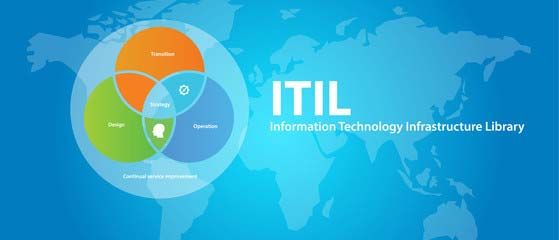
How to Develop Service Strategy Using ITIL Best Practices
What is ITIL Service Strategy?
ITIL Service Strategy is the way through which organizations understand the importance of adopting a market driven approach. With its help, businesses deliver products and services that their customers need by encouraging the use of service management for managing IT services. ITSM helps organizations get their mission and vision with the right kind of technology and ITIL guides how IT related services will be managed.
Companies are adopting ITIL because they realize the benefits they will reap with the right kind of technology and processes. ITIL, since it came into being in 1980, has served as a business partner to several organizations so that they adopt the practices that are relevant to them.
What’s the Relationship between ITSM & ITIL
ITSM
ITSM stands for IT service management and is concerned with how people manage the information system that will deliver value to their clients. It includes activities like planning and managing, so that the organization functions smoothly.
ITSM Training
The ITSM training focuses on management of IT related services like planning, delivery, as well as support. It gives a business professional the ability to align IT with their business strategy. The certification generally includes classroom as well as online training so that professionals can:
- Cut down on operating costs
- Improve customer satisfaction
- Improve product cycle time
- Improve the quality of service
- Increase profit margins
ITIL
ITIL is a well recognized framework of ITSM that has been adopted by a number of organizations from all over the world. ITIL makes it possible for businesses to achieve an efficient ITSM and suggests ways in which resources can be improved so that the clients get real value.
ITIL Certification Training
ITIL certification training has five levels and is available for people who want to gain expertise in the said field. For ITIL exam prep it is important to attend ITIL classes as they will cover the five tiers of ITIL certification training.
Foundation Level
The foundation level covers the basic concepts and terminologies that are used in the ITIL service lifecycle, in addition to this, candidates will also learn what contribution they will make to service management practices.
Practitioner Level
This is the second tier of the ITIL training and bridges the gap between the first and the third level. The practitioner level covers how people can adopt the ITIL framework and incorporate it into their organizations.
Intermediate Level
The intermediate level covers service lifecycle that has five levels and includes release control and operational support.
Expert Level
The fourth tier is the expert level that gives an in-depth understanding of ITIL concepts. It is important to know that one must clear foundation and intermediate exams in order to appear for this test.
Master Level
The last tier is the master tier that demands the practical application of all the concepts in different organizations and gives a diverse experience on project execution as well as ITIL adoption.
ITIL Foundation
ITIL Foundation certification is for people who need to understand the processes as well as the key concepts of the ITIL service lifecycle. Professionals learn the following things:
- Best practices of ITIL.
- How ITIL and ITSM can be improved.
- The basics of ITIL which includes the scope, objectives, and advantages.
- The importance of ITIL.
There are no eligibility criteria for this certification and it can be opted by anyone who wants to learn about the ITIL processes.
How to Start With ITIL
There are five stages that make up the ITIL framework, which consists of different processes and functions that are a part of IT organizational structure. The ITIL service lifecycle has the following stages:
Service Strategy
This helps businesses to set goals and make strategies that would help in fulfilling client requirements.
Service Design
This includes designing the functions, products, service management processes, technology, and infrastructure.
Service Transition
This focuses on the state of the service while simultaneously working on organizational change. Service transition makes sure that risk and impact are in control so that the ongoing services don’t get affected.
Service Operation
Service operation makes sure that operational tasks work smoothly and is also responsible for application related services as well as the infrastructure.
Continual Service Improvement
Continual service improvement keeps a check on quality and works to improve the processes.
ITIL Implementation
It is important to know that there is no one size fit all approach that will work for every business; however, ITIL can be easily customized according to the needs of a business.
Learn About the Objectives of ITIL
If you want your business to thrive, you need to align your business objectives with ITIL objectives. ITIL certification allows business to get a thorough understanding and also adds value to the IT structure.
Study the Current Process Maturity
If you are about to implement ITIL, it is important that you first assess the current process maturity so that you can identify the process improvement areas. Make sure that maturity assessment is realistic if you want to get a favorable outcome.
Define ITIL Process and Process Owner
You need to identify the roles and responsibilities of process owner because when it comes to ITIL, success depends on skills of the desk agents. ITIL needs a lot of collaborate work, which is why it is important to educate people about the different functions.
Start Small
Before starting, keep realistic expectation as you can’t implement all the processes at the same time. This is the reason why it is recommended you start with important processes like knowledge management.
Review and Improve
Reviewing the processes will help you in figuring out the gaps and will help in aligning the ITIL goals with business goals.
Advantages of ITIL
Here are some of the advantages of ITIL:
- Alignment of business goals.
- Better risk management.
- Higher customer satisfaction rate.
- It will lead to cost optimization.
- You will see an improvement in service quality.
